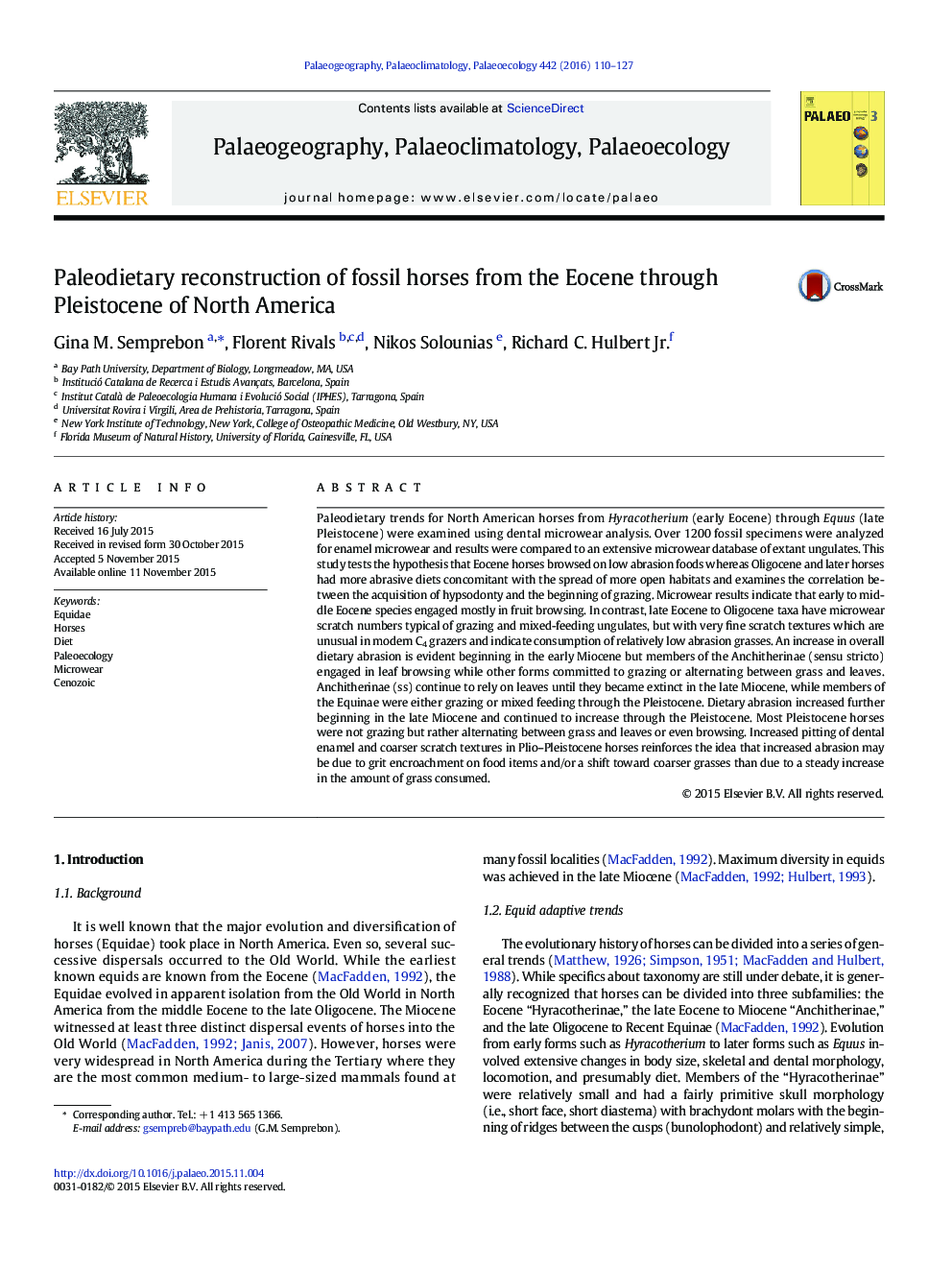| کد مقاله | کد نشریه | سال انتشار | مقاله انگلیسی | نسخه تمام متن |
|---|---|---|---|---|
| 6349301 | 1622149 | 2016 | 18 صفحه PDF | دانلود رایگان |
عنوان انگلیسی مقاله ISI
Paleodietary reconstruction of fossil horses from the Eocene through Pleistocene of North America
ترجمه فارسی عنوان
بازسازی اسکله های فسیلی از ائوسن از طریق پلیستوکین شمال امریکا توسط کمپلیستی
دانلود مقاله + سفارش ترجمه
دانلود مقاله ISI انگلیسی
رایگان برای ایرانیان
کلمات کلیدی
اسبها اسبها، رژیم غذایی، پالئواکولوژی، مایکروویرو، کنزوئیک،
موضوعات مرتبط
مهندسی و علوم پایه
علوم زمین و سیارات
فرآیندهای سطح زمین
چکیده انگلیسی
Paleodietary trends for North American horses from Hyracotherium (early Eocene) through Equus (late Pleistocene) were examined using dental microwear analysis. Over 1200 fossil specimens were analyzed for enamel microwear and results were compared to an extensive microwear database of extant ungulates. This study tests the hypothesis that Eocene horses browsed on low abrasion foods whereas Oligocene and later horses had more abrasive diets concomitant with the spread of more open habitats and examines the correlation between the acquisition of hypsodonty and the beginning of grazing. Microwear results indicate that early to middle Eocene species engaged mostly in fruit browsing. In contrast, late Eocene to Oligocene taxa have microwear scratch numbers typical of grazing and mixed-feeding ungulates, but with very fine scratch textures which are unusual in modern C4 grazers and indicate consumption of relatively low abrasion grasses. An increase in overall dietary abrasion is evident beginning in the early Miocene but members of the Anchitherinae (sensu stricto) engaged in leaf browsing while other forms committed to grazing or alternating between grass and leaves. Anchitherinae (ss) continue to rely on leaves until they became extinct in the late Miocene, while members of the Equinae were either grazing or mixed feeding through the Pleistocene. Dietary abrasion increased further beginning in the late Miocene and continued to increase through the Pleistocene. Most Pleistocene horses were not grazing but rather alternating between grass and leaves or even browsing. Increased pitting of dental enamel and coarser scratch textures in Plio-Pleistocene horses reinforces the idea that increased abrasion may be due to grit encroachment on food items and/or a shift toward coarser grasses than due to a steady increase in the amount of grass consumed.
ناشر
Database: Elsevier - ScienceDirect (ساینس دایرکت)
Journal: Palaeogeography, Palaeoclimatology, Palaeoecology - Volume 442, 15 January 2016, Pages 110-127
Journal: Palaeogeography, Palaeoclimatology, Palaeoecology - Volume 442, 15 January 2016, Pages 110-127
نویسندگان
Gina M. Semprebon, Florent Rivals, Nikos Solounias, Richard C. Jr.,
